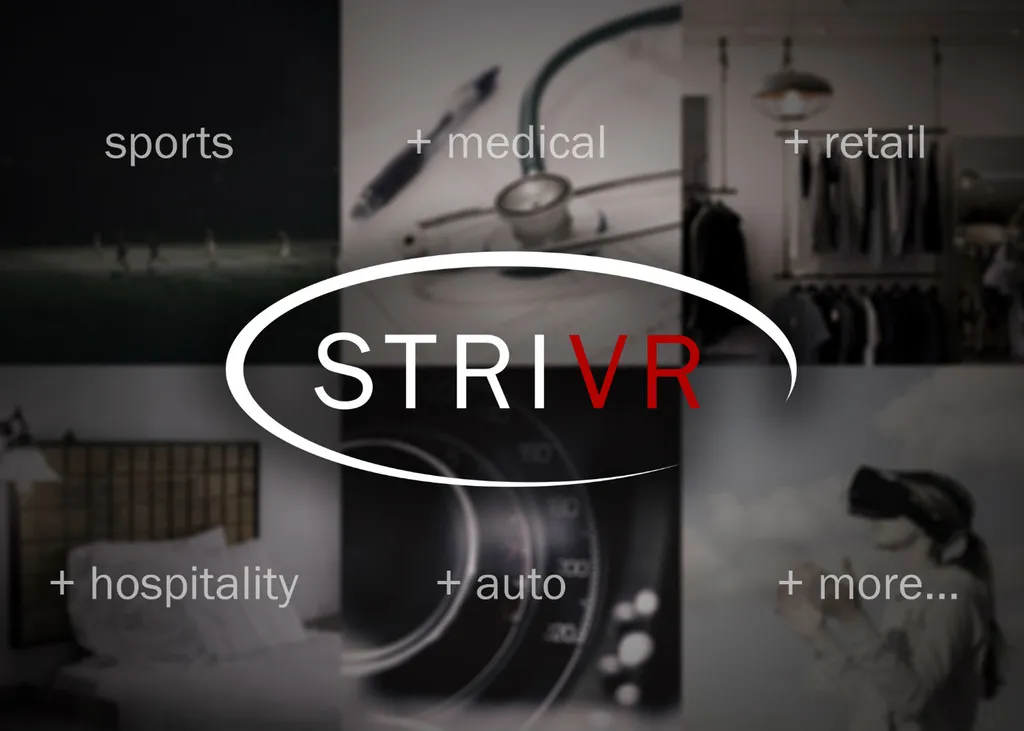It turns out a lot of the same things football players need to practice to perform better on the field, also applies to enterprise – at least in virtual reality. And so startup STRIVR Labs has launched into a new enterprise VR training business, while still remaining in the sports VR training game.
The company has completed a $5 million Series A investment round led by Signia Venture Partners with participation from BMW i Ventures, AdvancIt Capital and Presence Capital to help expand its reach.
Derek Belch, co-founder and CEO of STRIVR, told UploadVR the company plans to use the funds to expand its offering to corporations and other entities that can benefit from the same type of experiential learning.
“STRIVR’s success to date has come from being able to improve reaction time, pattern recognition, and decision making in athletes—the same outcomes sought by organizations of all types and sizes,” Belch said.
STRIVR is already working with a handful of Fortune 500 companies on comprehensive training programs utilizing VR.
“We’re not leaving sports, but making a pivot to put significant emphasis on VR as a performance learning tool outside of sports,” Belch said. “There’s a bigger opportunity with enterprise than with sports.”
STRIVR’s enterprise-focused product is a performance training platform that uses VR and AR to help educate and train in areas like sales, operations, customer service, safety, and human resources. It is an end-to-end platform, from content capture to reporting/assessment, and the content is viewed with regular VR headsets like Oculus and Samsung Gear VR. A less-immersive lite version is also available on mobile and tablet. STRIVR uses data and assessment tools to assess learner performance, enabling organizations to make data-driven decisions about individual preparedness for critical situations.
“This training content works effectively if done the right way,” Belch said. “We’re taking the model of what we’ve done with football and basketball players and applying that to corporations as they train employees. There’s never enough time to get employees quality reps. And experience matters. Reading or watching video in 2D isn’t as strong as doing it – even if you’re doing it in VR.”
More than 25 professional and collegiate sports teams use STRIVR to enhance off-the-field preparation including the Dallas Cowboys, Arizona Cardinals, Minnesota Vikings, Clemson University, Stanford University, the Washington Wizards, Detroit Pistons, and Washington Capitals.
“Last year we had 20,000 plays filmed and 45,000 play views,” Belch said. We passed that this year in October, so the usage is up and the data collection is strong. Next year is a critical year because people will look at this and see us adding teams.”
Belch said STRIVR is looking at some individual sports where they can use visualization and put the player in the experience.
“We’ve met with U.S. Tennis Association and we’re looking at a few things,” Belch said. “The challenge is the speed of the ball and the ergonomics of what you do in real life versus VR.”
STRIVR has done a few PGA Tour 360 video fan experience deals, but nothing on the training side yet.
“I’m an avid golfer and we’re testing a few things internally, but it’s hard to do something that’s additive beyond hitting balls,” Belch said. “We’re so close, yet so far away with some of these sports. The hardware will get better in next 12 to 16 months.”
STRIVR is focusing on the future of its business, and that happens to be business.
“Today sports is the focus, but in the next year or two we’re going to predominantly focus on enterprise,” Belch said. “We’re not putting sports on the backburner. We’ll double down in sports because anything we do there can be applied to enterprise. We’ve seen with sports teams encouraging results and we feel this can be a major benefit for corporations to improve the training experience. Hopefully enterprise will be the bulk of our business down the line.”
Belch said current enterprise projects, some of which will be officially announced in early 2017, use mixed reality with CG and 360 video.
“We’re doing some training all with 360 video things and we’re experimenting with some interesting ways to make 360 video interactive with light fields,” Belch said. “We’re currently using data tracking, reporting and analytics to figure out best practices on how someone can come in on a Monday and two weeks later on a Friday have what they need to be prepared.”
STRIVR is currently working with HTC Vive, Oculus Rift and Samsung Gear VR across all of its business. Belch said the company is looking at Google Daydream very closely and believes the controller will open up a unique way to select things in training.
“Once the lightbulb comes on or someone is willing to take a chance and go all-in, we’ll see an uptick in customers,” Belch said.


























